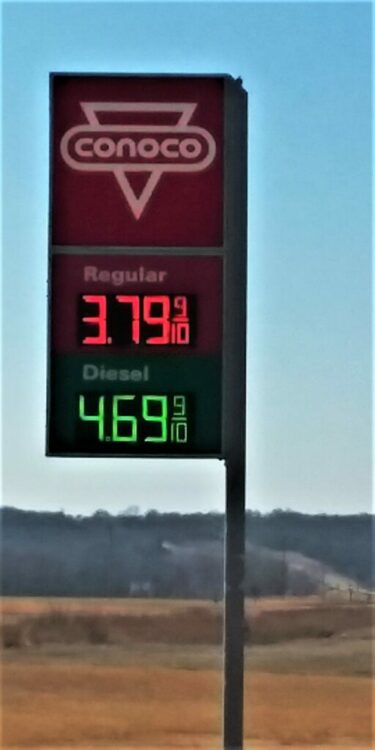Those who would like to save money at the pump have some vehicle driving tips to help them reach that goal.
A call to AAA, Topeka, resulted in the following tips from Shawn Martin, AAA Retail Sales Associate with additional tips from Consumer Reports:
Drive the speed limit. “Your driving habits can play a significant role in fuel economy, according to a Consumer Reports story https://www.consumerreports.org/fuel-economy-efficiency/10-tips-to-get-the-most-out-of-a-tank-of-gas-a2642110189/. Consumer Reports measured gas mileage while driving at a steady 55, 65, and 75 mph in a Nissan Altima and Toyota RAV4. They found that reducing speed from 65 mph to 55 mph improved fuel economy by 6 mpg in the Altima and 8 mpg in the RAV4. The penalty of cruising at 75 mph, rather than 65 mph, was almost 7 mpg in the Altima and 6 mpg in the RAV4. Higher speeds exact a toll on fuel consumption. Another way to look at it: Speeding up from 55 to 75 mph is like moving from a compact car to a large SUV. Beyond fuel concerns, speeding is, of course, a safety risk.
No sudden acceleration. “Avoid hard acceleration and braking whenever possible. In our tests, frequent bursts of acceleration and braking reduced an older Toyota Camry’s mileage by 2 to 3 mpg. Once up to speed, maintain a steady pace, according to the web article. “The harder you accelerate, the more fuel you use. Unnecessary braking wastes the fuel you used to get up to speed. Drive smoothly and anticipate the movement of traffic. Smooth acceleration, cornering, and braking also extend the life of the engine, transmission, brakes, and tires.”
Check your tire pressure. Tires lose about 1 psi a month. Having tires with lower pressure than what is recommended on the doorjamb sticker can affect performance, tire longevity, and fuel economy.
Using air conditioning does consume gas. In mild weather, if you can get by without it, even if you open the windows, it will give incremental savings. But once it gets hot, having AC on to cool the cabin and lower humidity is a wise investment in your comfort and ability to stay alert while driving.
According to Consumer Reports, if in the market for a more fuel-efficient car, HERE are Consumer Reports vehicles with the best MPG.
- 2022 Honda Insight
- 2022 Toyota Prius
- 2022 Hyundai Ioniq
- 2022 Hyundai Elantra
- 2022 Toyota Corolla
- 2022 Honda Accord
- 2022 Toyota Camry
- 2022 Hyundai Sonata
- 2022 Kia Niro
- 2022 Toyota Avalon”
